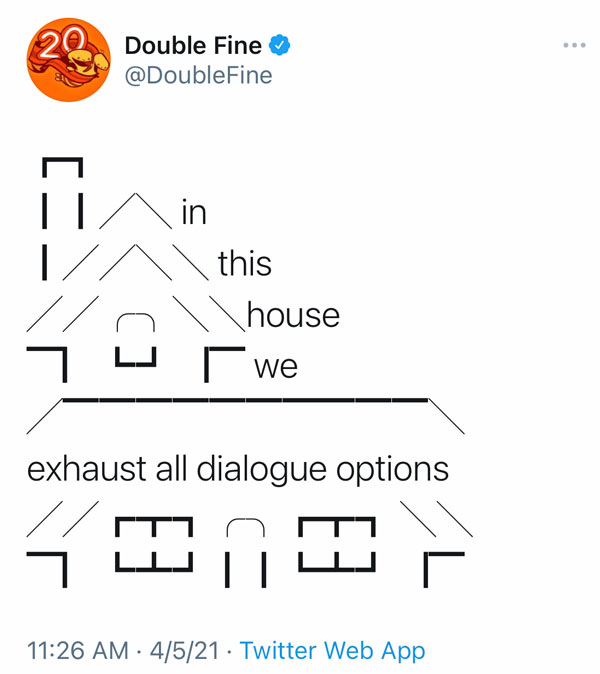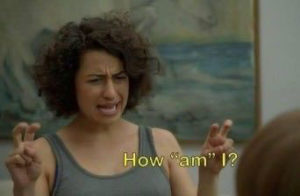In a pre-pandemic post, “What to say when you don’t know what to say,” I made a big list of some of my favorite conversational shortcuts that I like to drop to keep conversations from being needlessly confrontational or boring.
Stuff like:
- “It wasn’t for me” when somebody asks you what you thought of something you hated that they might’ve potentially liked
- “You may be right” when somebody criticizes you and “go to hell” wouldn’t be prudent
- “Thank you for saying so” when somebody gives you a compliment
And so forth.
The pandemic just amplifies everything, of course, so now that I barely speak to anyone, I rely on these conversational shortcuts more than ever.
One of my favorite jokes of the pandemic is how bad it is to start a conversation with “How are you?” (Daniel Johnston’s iconic mural seems almost unbearably existential these days.)
One needs to go looking for new alternatives, so I enjoyed this Kat Vellos post on Instagram:
“It’s good to hear your voice” or “I’ve been looking forward to talking to you” seem like good replacement options to me, and I plan on practicing them this week, as I have a rare string of daily phone calls coming up.
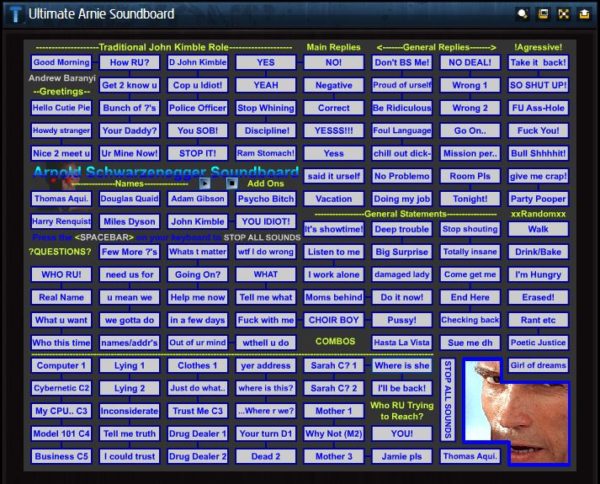
Looking at Vellos’ chart made me think of one of my favorite artifacts from my youth: the soundboard. Soundboards were Flash apps that you could pull up on your computer and use for prank calling people.
The funny thing about the Arnold Schwarzenegger soundboards is that in the original Terminator movie, the Terminator is shown actually picking his dialogue:

During radio tours, when I’d talk to maybe two dozen radio DJs on the day of a book release, I used to have fantasies of making my own soundboard by recording myself answering frequently asked questions and playing them back during interviews.
Conversational shortcuts are like having one of those old soundboards in your head. It makes conversation a kind of game, where you pick the best option to keep the conversation going.
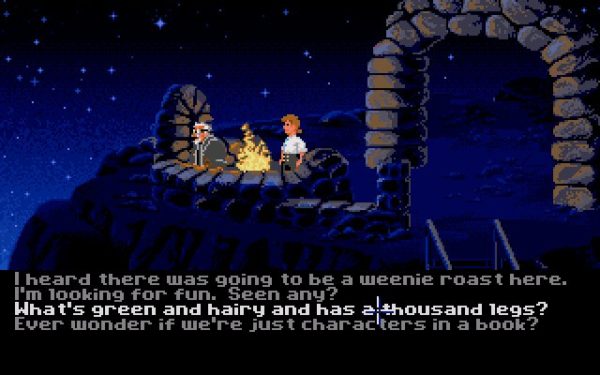
Which brings me to another favorite artifact from my youth: the dialogue screens in the LucasArts adventure games I spent endless hours playing.
Because the games were designed so you never actually lost or got a GAME OVER screen, you could spend a long time trying out all the different dialogue options, going down the dialogue tree, or “exhausting the dialogue,” to try to uncover funny jokes before advancing the story line. (Here’s more from legend Ron Gilbert on the dialog trees in the LucasArts games.)
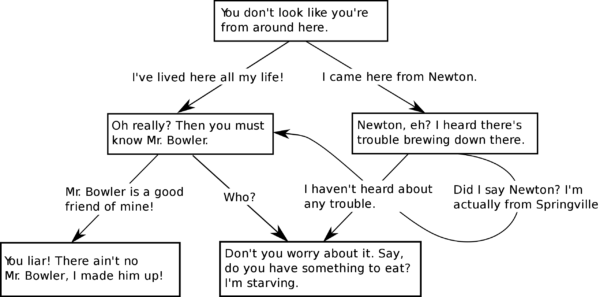
Conversations with other human beings are, of course, by nature more chaotic, and there are an infinite number of paths one can go down.
“The best conversationalists are people who are hoping to end up somewhere they didn’t expect,” goes a line of dialogue in The Chairs are Where The People Go. “It seems to me that the most pleasing thing you can find yourself saying in a conversation is something you haven’t said before.”
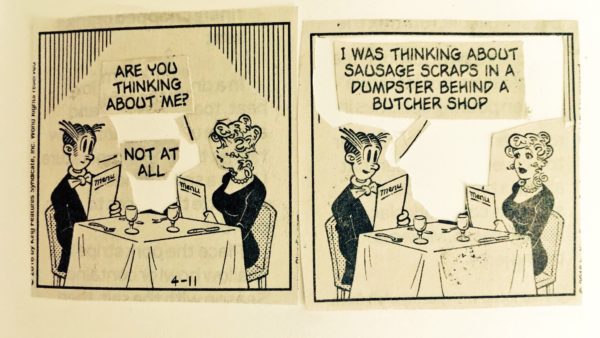
That thrill, that wondering what will be said next (by the other person or by you!) is the very thing that makes for great conversation. But it means that all parties involved must be given room to speak and finish their sentences. It also means that sometimes you have to throw out your little conversational shortcuts, your pre-recorded dialogue, and let go.
“I can’t help wondering what we might have said if we hadn’t been stopped,” wrote Steve Martin, of a time he was famously interrupted onstage. “Maybe we were just around the corner from something thrilling. Isn’t that the nature of a live conversation? It halts, it stutters, it doubles back, it soars. We might have found a small nugget, something off topic or unexpected.”

One possible danger of thinking of conversation as a game is that you don’t actually shut up and listen to the other person, because you’re busy pulling up a list of possible dialogue options, like the Terminator. You have to train yourself to really listen, to let the other person speak, and to let their last words echo for a bit, remaining comfortable with a bit of “dead air,” and only then coming back with a response. (Great options are: “Jeez, I don’t know!” or “Gosh, I’ll have to think about that!”)
Finally, it can be very hard to know how to end a conversation. (I always laugh at regional variations in how people try to end conversations, like the Midwesterner passive-aggressive penchant for saying, “Well, I’d better let you go!”)
I would like to end this particular conversation monologue with the secret of great interviewers and perhaps the most important conversational shortcut: silence.
